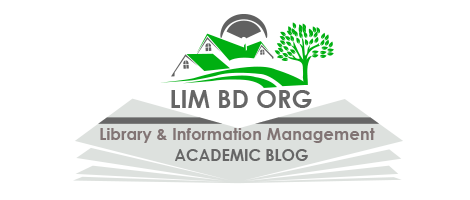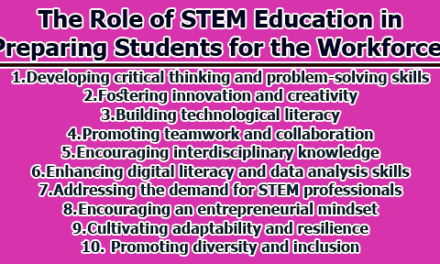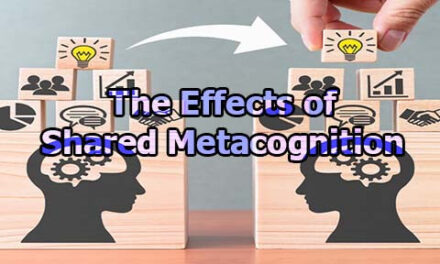Understanding the Three Domains of Learning:
The concept of learning encompasses more than just the acquisition of knowledge. Educational psychologist Benjamin Bloom and his colleagues introduced a taxonomy in 1956 that categorizes learning objectives into three distinct domains: cognitive, affective, and psychomotor. These domains provide a comprehensive framework for educators to design and assess learning experiences effectively. In the rest of this article explores understanding the three domains of learning: cognitive, affective, and psychomotor.
The Cognitive Domain of Learning:
The cognitive domain is one of the three fundamental domains of learning identified in Bloom’s Taxonomy, first developed by Benjamin Bloom and colleagues in 1956. This domain centers on intellectual development, encompassing knowledge acquisition, mental skills, and the processes involved in thinking, reasoning, and understanding (Bloom et al., 1956). It is often the most emphasized domain in educational settings, as it directly relates to academic achievement and the mastery of subject matter.
Hierarchical Structure: The original taxonomy of the cognitive domain is hierarchical, meaning that each level builds upon the previous one. Bloom and his team outlined six major levels of cognitive learning, listed in order of increasing complexity:
- Knowledge: This is the most basic level, involving the recall of facts, terms, basic concepts, or answers. For example, memorizing the definition of a term or recalling dates of historical events falls into this category.
- Comprehension: At this level, learners demonstrate understanding by organizing, comparing, translating, interpreting, or summarizing information. It goes beyond simple recall and implies grasping the meaning.
- Application: This level involves using acquired knowledge in new and concrete situations. For example, applying a mathematical formula to solve a problem is a form of application.
- Analysis: Learners examine and break information into parts by identifying motives or causes, making inferences, and finding evidence to support generalizations. This level encourages critical thinking.
- Synthesis (revised as Create): This level requires learners to compile information in a different way by combining elements in a new pattern or proposing alternative solutions. The revised taxonomy renamed this level “Create” to better capture the action of producing new or original work.
- Evaluation (revised as Evaluate): This final level involves making judgments based on criteria and standards. Learners assess the value of ideas or materials for a given purpose, often involving critical thinking and informed decision-making.
Revised Taxonomy: In 2001, a group led by Lorin Anderson and David Krathwohl revised Bloom’s original taxonomy to make it more dynamic and contemporary. The revised version replaced the static noun forms with active verbs to better reflect the nature of thinking and learning processes. The levels were also reordered slightly and renamed as follows: Remember, Understand, Apply, Analyze, Evaluate, and Create (Anderson & Krathwohl, 2001).
| Original (1956) | Revised (2001) |
| Knowledge | Remember |
| Comprehension | Understand |
| Application | Apply |
| Analysis | Analyze |
| Synthesis | Create |
| Evaluation | Evaluate |
Educational Implications: Understanding the cognitive domain is essential for educators, as it provides a structured way to design learning objectives, assessment tools, and instructional strategies. For example, lower-level objectives (like remembering and understanding) are best assessed through quizzes and tests, whereas higher-level objectives (like analyzing or creating) may be better suited to projects, discussions, and problem-solving tasks (Cherry, 2023).
This hierarchical model also helps educators ensure that they are not solely focusing on rote memorization but are encouraging students to engage in deeper levels of learning. By progressively challenging students through each level of the cognitive domain, teachers can foster critical thinking, innovation, and the ability to apply knowledge in real-world situations.
The Affective Domain of Learning:
While the cognitive domain focuses on intellectual skills and knowledge acquisition, the affective domain addresses the emotional aspects of learning. It involves how learners deal with things emotionally—such as feelings, values, appreciation, enthusiasms, motivations, and attitudes (Krathwohl et al., 1964). This domain plays a critical role in shaping student engagement, ethical decision-making, empathy, and the ability to work collaboratively—qualities essential for personal and professional development.
Levels of the Affective Domain: David Krathwohl, a collaborator of Bloom, expanded and refined the affective domain taxonomy into five hierarchical levels. These levels describe how individuals internalize values and respond emotionally to learning experiences (Krathwohl et al., 1964):
- Receiving: This is the most basic level, where the learner becomes aware of or is sensitized to the existence of certain ideas, materials, or phenomena. It reflects willingness to listen or acknowledge without necessarily responding (e.g., listening attentively in class).
- Responding: At this level, learners not only receive but also actively participate. They may comply, volunteer, or react in a meaningful way—such as contributing to discussions or participating in group activities.
- Valuing: Here, individuals begin to see worth or value in an idea, behavior, or phenomenon. They express personal beliefs or commitment, such as supporting fairness or environmental responsibility. This level can be demonstrated by showing concern for others or defending a position.
- Organizing: This stage involves integrating new values with one’s existing value system, forming a consistent belief framework. For instance, a student may compare conflicting values, resolve them, and build a new ethical code or lifestyle based on deeper understanding.
- Characterizing: At the highest level, individuals behave consistently with the internalized values across a wide range of situations. These values influence their worldview and decision-making process. For example, a student who values honesty may consistently act with integrity even when no one is watching.
Educational Applications: The affective domain is often less explicitly taught than the cognitive domain, yet it plays a pivotal role in learning success. Positive attitudes toward a subject can enhance motivation, attention, and persistence, while negative emotions can hinder engagement and learning.
Instructors can encourage affective learning by:
- Creating a supportive and respectful classroom climate.
- Encouraging reflection and open discussions.
- Modeling values and attitudes.
- Incorporating service learning, group work, and ethics-based case studies.
These strategies help students not only learn content but also develop empathy, ethical reasoning, and emotional intelligence—skills crucial for leadership, teamwork, and civic responsibility.
Importance in Lifelong Learning: Fostering the affective domain in learners builds the emotional and ethical foundation needed for success beyond academia. Emotional engagement often drives the desire to explore further, persevere through challenges, and commit to lifelong learning and personal growth (Cherry, 2023).
The Psychomotor Domain of Learning:
The psychomotor domain addresses physical movement, coordination, and the use of motor skills. It involves the development of manual or physical skills and the ability to perform tasks that require physical actions. This domain is particularly important in fields where hands-on practice and physical performance are critical, such as healthcare, engineering, sports, and vocational training (Simpson, 1972).
Unlike the cognitive and affective domains, the psychomotor domain was not extensively developed by Bloom himself. Instead, later educators, such as Elizabeth Simpson, Anita Harrow, and Dave R.H., expanded on Bloom’s work and created more detailed taxonomies to classify psychomotor learning objectives.
Simpson’s Taxonomy of the Psychomotor Domain: Elizabeth Simpson (1972) proposed a widely recognized taxonomy for the psychomotor domain that includes seven hierarchical levels, describing the progression from observation to mastery:
- Perception: The ability to use sensory cues to guide motor activity. This includes recognizing patterns or movements and interpreting them to act accordingly—for example, distinguishing sounds in phonetics or identifying key components in a dissection.
- Set: This level refers to the learner’s readiness to take a particular action, which includes mental, physical, and emotional disposition. For instance, a student preparing mentally and physically to play a musical piece.
- Guided Response: Involves the early stages of learning a complex skill, often demonstrated through imitation and trial-and-error. An example is a nursing student practicing blood pressure measurement under supervision.
- Mechanism: At this level, learners develop more confidence and proficiency. Movements become habitual and are performed with some degree of assurance and competence.
- Complex Overt Response: This stage is marked by the skilled performance of motor tasks that require speed, accuracy, and coordination. A surgeon performing a routine operation or a pianist playing a complex composition would operate at this level.
- Adaptation: Learners can modify their skills to fit different situations. For example, a paramedic adapting CPR techniques to a non-standard setting.
- Origination: At the highest level, individuals can create new movement patterns or responses to unique situations. This includes developing a new surgical technique or choreographing a new dance routine.
Educational Applications: Incorporating the psychomotor domain into instruction is crucial for disciplines that require physical execution. Practical labs, simulations, physical demonstrations, and hands-on activities are effective teaching methods to foster psychomotor development.
Educators can design learning objectives using active verbs like assemble, construct, demonstrate, manipulate, operate, and perform to articulate the expected motor skills (Dave, 1975). Assessment should also reflect physical performance and progress toward autonomy and precision.
Integration with Other Domains: Though the psychomotor domain emphasizes physical skills, its development is closely linked with the cognitive and affective domains. For example, performing a surgical procedure not only requires psychomotor competence but also cognitive understanding of anatomy and affective qualities such as care and ethical sensitivity (Anderson & Krathwohl, 2001).
This integration reinforces the idea that holistic learning engages the whole person—mind, heart, and body.
It is apparent that understanding and applying these domains allows educators to create more effective teaching strategies that address the full spectrum of learning. By recognizing that learning involves cognitive, emotional, and physical components, educators can design comprehensive curricula that foster holistic development in learners.
References:
- Anderson, L. W., & Krathwohl, D. R. (Eds.). (2001). A taxonomy for learning, teaching, and assessing: A revision of Bloom’s Taxonomy of Educational Objectives. Longman.
- Bloom, B. S., Engelhart, M. D., Furst, E. J., Hill, W. H., & Krathwohl, D. R. (1956). Taxonomy of educational objectives: The classification of educational goals. Handbook I: Cognitive domain. Longmans, Green.
- Cherry, K. (2023). How Bloom’s Taxonomy Can Help You Learn More Effectively. Verywell Mind. https://www.verywellmind.com/blooms-taxonomy-and-learning-7548280
- Dave, R. H. (1975). Developing and writing behavioral objectives. In R. J. Armstrong (Ed.), Developing and writing behavioral objectives (pp. 66–96). Educational Innovators Press.
- Menix, K. D. (1996). Domains of learning: Interdependent components of achievable learning outcomes. The Journal of Continuing Education in Nursing, 27(5), 200–208. https://doi.org/10.3928/0022-0124-19960901-04
- Krathwohl, D. R., Bloom, B. S., & Masia, B. B. (1964). Taxonomy of educational objectives: The classification of educational goals. Handbook II: Affective domain. David McKay Company.
- Simpson, E. J. (1972). The classification of educational objectives in the psychomotor domain: The psychomotor domain. Gryphon House.

Library Lecturer at Nurul Amin Degree College










